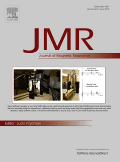
JOURNAL OF MAGNETIC RESONANCE
metrics 2024
Connecting Science through Magnetic Resonance Discoveries
Introduction
The JOURNAL OF MAGNETIC RESONANCE, a leading peer-reviewed publication from ACADEMIC PRESS INC ELSEVIER SCIENCE, serves as a vital platform for disseminating cutting-edge research in the fields of biochemistry, biophysics, and condensed matter physics. With an ISSN of 1090-7807 and an E-ISSN of 1096-0856, this journal is committed to publishing innovative studies that explore the principles and applications of magnetic resonance techniques. Ranking in the Q3 and Q2 quartiles across various categories in 2023, it reflects a robust standing within the academic community, especially noted for its contributions to nuclear and high energy physics where it ranks 29th out of 87 journals. The journal's comprehensive scope and emphasis on accessible research make it an essential resource for researchers, professionals, and students alike, facilitating advancements in both theoretical and practical aspects of magnetic resonance. With conversion years spanning 1997 to 2024, the journal continues to uphold its legacy as a cornerstone of knowledge in the best practices of scientific research.
Metrics 2024
 0.59
0.59 2.00
2.00 2.10
2.10 143
143Metrics History
Rank 2024
Scopus
IF (Web Of Science)
JCI (Web Of Science)
Quartile History
Similar Journals
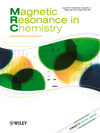
MAGNETIC RESONANCE IN CHEMISTRY
Navigating the Complexities of Magnetic Resonance in ChemistryMAGNETIC RESONANCE IN CHEMISTRY, published by Wiley, is a prominent journal dedicated to the advancement of knowledge in the field of magnetic resonance as applied to chemistry and materials science. With an ISSN of 0749-1581 and an E-ISSN of 1097-458X, this journal has been an essential resource for researchers since its inception in 1985, maintaining its reputation as a leading publication through its converged years up to 2024. Spanning diverse topics, the journal holds a Q2 quartile ranking in both the Chemistry (miscellaneous) and Materials Science (miscellaneous) categories, illustrating its significance in the academic community. With Scopus rankings placing it in the 61st percentile for General Chemistry and the 55th percentile for General Materials Science, this journal is an esteemed platform for original research, reviews, and critical discussions surrounding magnetic resonance methodologies and applications. As access options are not open, it ensures a curated dissemination of high-quality, peer-reviewed content to support professionals, researchers, and students in their scholarly endeavors.
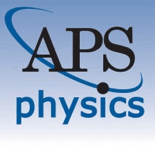
PHYSICAL REVIEW B
Illuminating the Frontiers of Materials SciencePHYSICAL REVIEW B, published by the American Physical Society, is a leading journal in the field of condensed matter physics and materials science, particularly focusing on electronic, optical, and magnetic materials. With an ISSN of 2469-9950 and an E-ISSN of 2469-9969, this periodical has garnered a prestigious reputation, achieving a Q1 ranking in both relevant categories as of 2023. The journal has recorded significant impact as reflected in its Scopus ranks, notably positioned at #95 out of 434 in Condensed Matter Physics and #75 out of 284 in the Materials Science sector, illustrating its importance in advancing research and discussions in these critical areas. Although it does not offer open access, PHYSICAL REVIEW B remains an invaluable resource for academics, researchers, and professionals seeking to increase their understanding of contemporary issues in condensed matter and material sciences. Established in 2005, this journal continues to foster innovation and dissemination of knowledge, making it a cornerstone publication for those engaged in cutting-edge research.
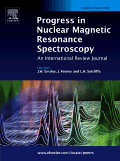
PROGRESS IN NUCLEAR MAGNETIC RESONANCE SPECTROSCOPY
Exploring the Depths of Spectroscopic SciencePROGRESS IN NUCLEAR MAGNETIC RESONANCE SPECTROSCOPY, published by PERGAMON-ELSEVIER SCIENCE LTD, is a premier journal dedicated to advancing the field of Nuclear Magnetic Resonance (NMR) spectroscopy, catering to a wide audience of researchers, professionals, and students engaged in analytical chemistry, biochemistry, materials science, and nuclear physics. With an impressive reputation reflected in multiple Q1 rankings across its relevant categories for 2023, this journal is recognized for its high-quality publications that contribute significantly to the understanding and application of NMR techniques. Although not open access, it remains a vital resource for those seeking to push the boundaries of scientific knowledge and innovation in various disciplines. Published continuously since 1965, this journal not only archives a rich history of NMR research but also presents cutting-edge findings and methodologies, making it an essential reference for anyone involved in this evolving field. The journal’s focus on impactful research, evidenced by its strong Scopus rankings, ensures a scholarly platform where the latest advancements meet the methodological rigor needed for real-world applications.
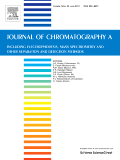
JOURNAL OF CHROMATOGRAPHY A
Advancing Chromatographic InnovationJOURNAL OF CHROMATOGRAPHY A, published by Elsevier, is a leading journal in the disciplines of Analytical Chemistry, Biochemistry, and Organic Chemistry, boasting an impressive 2023 Q2 categorization across multiple fields. With an ISSN of 0021-9673 and an E-ISSN of 1873-3778, this prestigious journal has been at the forefront of chromatography research since its inception in 1958. The journal serves as a vital platform for disseminating high-quality research articles, reviews, and insights into the latest developments in chromatographic techniques and applications, reflecting its standing in the top tier of analytical and organic chemistry literature, evidenced by its impressive Scopus rankings. While it currently operates under a subscription model, the journal continues to make significant contributions to the scientific community by fostering collaboration and innovation in chromatography methodologies. We invite researchers, professionals, and students to engage with the essential findings shared within its pages, which are foundational for advancements in various scientific fields, making it an indispensable resource for enhancing chromatographic knowledge and practice.

MAGNETIC RESONANCE IMAGING
Charting New Territories in Magnetic Resonance ImagingMAGNETIC RESONANCE IMAGING, published by Elsevier Science Inc, stands at the forefront of research in the fields of Biomedical Engineering, Biophysics, and Radiology, Nuclear Medicine and Imaging. Since its inception in 1982, the journal has become a vital resource, currently enjoying a Q2 ranking in its respective categories as of 2023, underscoring its influence and significance within the scientific community. With an ISSN of 0730-725X and an E-ISSN of 1873-5894, it provides an essential platform for disseminating groundbreaking studies and advancements in magnetic resonance imaging technology and applications. Researchers, professionals, and students benefit from its comprehensive articles that address both theoretical advancements and practical implementation in clinical settings. The journal's commitment to advancing knowledge is reflected in its recognition in Scopus Rankings, where it lies in the 67th percentile for Radiology, Nuclear Medicine and Imaging. By fostering an environment of critical dialogue and innovation, MAGNETIC RESONANCE IMAGING remains a cornerstone publication for those dedicated to pioneering the future of imaging science.

Journal of Structural Biology-X
Connecting Researchers to the Heart of Structural BiologyThe Journal of Structural Biology-X, published by Elsevier, is a leading open-access journal dedicated to advancing the field of structural biology. Launched in 2019, it has quickly established itself as a vital resource for researchers, professionals, and students, boasting a prestigious Q1 ranking in Structural Biology for 2023 and achieving an impressive Scopus rank of #19 out of 49 in the biochemistry, genetics, and molecular biology category. With an E-ISSN of 2590-1524, this journal emphasizes accessibility and collaboration by providing open access to its comprehensive collection of research articles, reviews, and cutting-edge methodologies. The scope of the journal encompasses significant themes within structural biology, including protein structure, molecular interactions, and imaging techniques, facilitating interdisciplinary dialogue and innovation. Join the global community of scientists and contribute to the body of knowledge that propels our understanding of molecular architecture through the Journal of Structural Biology-X.

SOLID STATE NUCLEAR MAGNETIC RESONANCE
Unveiling the Secrets of Solid-State NMR ScienceSOLID STATE NUCLEAR MAGNETIC RESONANCE, published by Academics Press Inc Elsevier Science, stands as a prominent journal in the fields of chemistry, instrumentation, nuclear and high energy physics, and radiation, offering a unique platform for researchers and professionals to disseminate their findings and insights. Since its inception in 1992, the journal has continuously showcased innovative research that enhances our understanding of solid-state NMR techniques and applications, contributing significantly to advancements in both theoretical and practical domains. With an impressive impact factor and achieving Q2 rankings across multiple disciplines, it represents a vital resource for academics and industry experts alike, fostering interdisciplinary collaboration and knowledge sharing. While currently not open access, researchers can access valuable content through institutional subscriptions, ensuring a wide reach and influence in the scientific community. The journal's commitment to high-quality publishing makes it a must-read for those at the forefront of nuclear magnetic resonance research.

SEMINARS IN ULTRASOUND CT AND MRI
Innovating Insights in Ultrasound, CT, and MRISEMINARS IN ULTRASOUND CT AND MRI is a prestigious academic journal dedicated to advancing the fields of radiology, nuclear medicine, and imaging. Published by W B SAUNDERS CO-ELSEVIER INC, this journal has been a cornerstone of scholarly communication since 1984, providing a platform for high-quality research and review articles that enhance the understanding of diagnostic imaging techniques. With a current impact factor reflected in its Q3 quartile ranking among 333 journals in its category, it remains a valuable resource for researchers and clinicians alike. The journal's focus includes but is not limited to innovations in ultrasound, computed tomography, and magnetic resonance imaging, making it essential for professionals looking to stay at the forefront of imaging science. While it operates under a subscription model, its extensive archive of influential articles ensures ongoing access to critical knowledge and developments in the field. With a commitment to quality and relevance, SEMINARS IN ULTRASOUND CT AND MRI continues to contribute significantly to the evolving landscape of medical imaging.

Biomolecular NMR Assignments
Advancing biomolecular insights through NMR excellence.Biomolecular NMR Assignments is a prominent academic journal dedicated to advancing the field of biomolecular nuclear magnetic resonance (NMR) spectroscopy. Published by SPRINGER, this journal aims to provide a platform for researchers to share significant findings, methodological advancements, and in-depth analyses related to protein structure, dynamics, and interactions through NMR techniques. Although not currently open access, it serves as a valuable resource for those in the fields of Biochemistry and Structural Biology, having established a respectable impact factor reflected in its category rankings within these disciplines. With its coverage spanning from 2007 to 2024, Biomolecular NMR Assignments continues to facilitate the exchange of knowledge among professionals and students, contributing to the growth and enhancement of contemporary scientific inquiry. Explore the intricacies of biomolecular studies in the Netherlands and beyond, where critical insights into molecular behavior and function converge.

Journal of Magnetics
Advancing the Frontiers of Magnetics ResearchJournal of Magnetics, published by the Korean Magnetics Society, is an essential resource dedicated to advancing the knowledge and understanding of magnetics across the disciplines of Condensed Matter Physics, Electrical and Electronic Engineering, and Electronic, Optical and Magnetic Materials. With a focus on innovative research and development from 2008 to 2024, this journal serves as a platform for sharing cutting-edge findings and theoretical advancements in the field. Although it currently holds a Q4 ranking in established categories, it is an emerging publication that invites researchers, professionals, and students alike to contribute to and engage with its scientific discourse. Notably, it embraces a community of scholars aiming to bridge the gap between theory and practical applications in magnetics, despite its current Scopus rankings reflecting deeper industry competition. Based in South Korea, the journal operates from its office at Korea Sciences & Technology Center, RM 905, Yeoksam-dong 635-4, Kangnam-ku, Seoul 135-703, South Korea. While it does not provide open access, its commitment to academic rigor promises to elevate its stature in subsequent years, making it a vital publication for those keen on exploring the frontiers of magnetics.